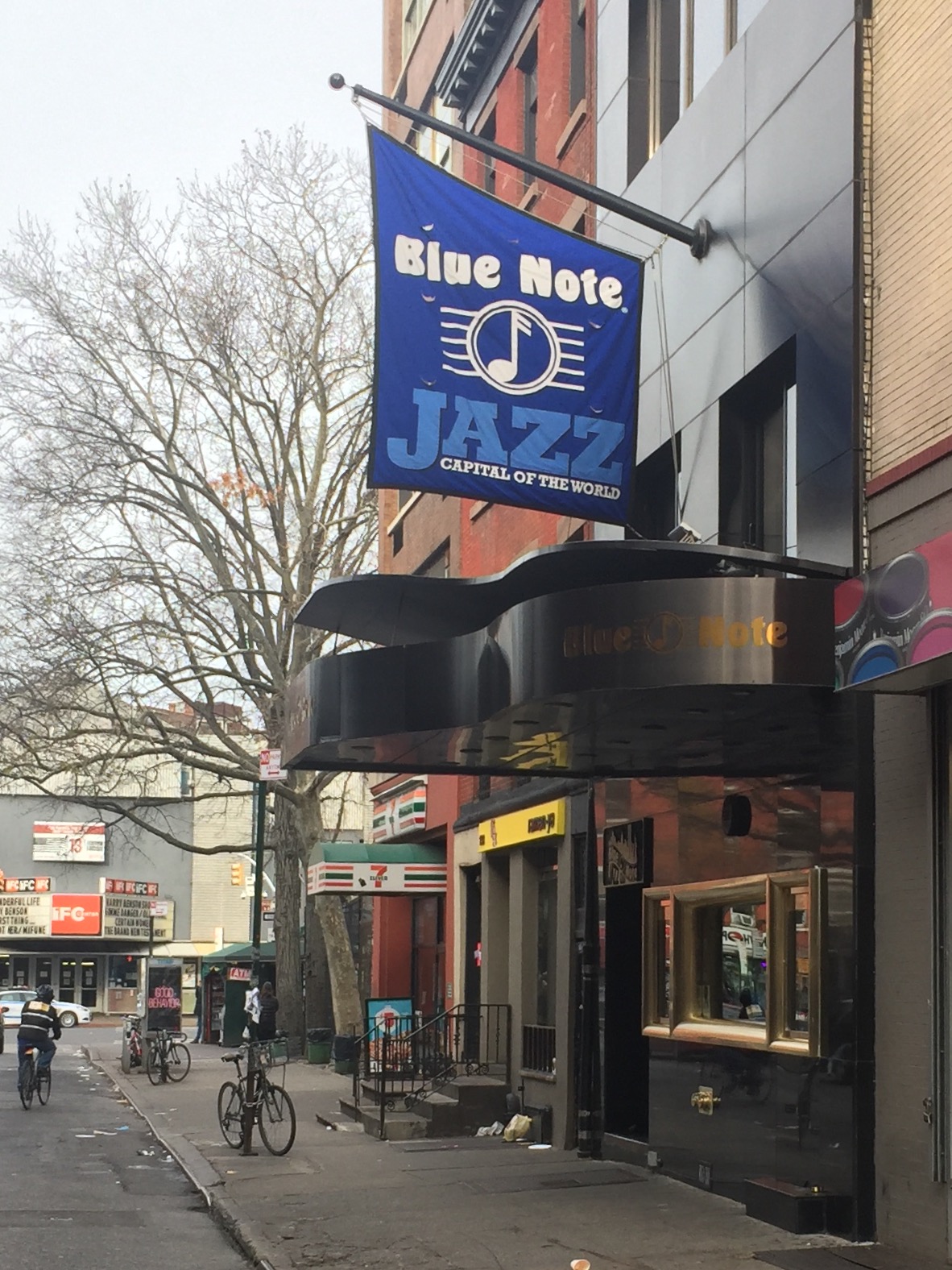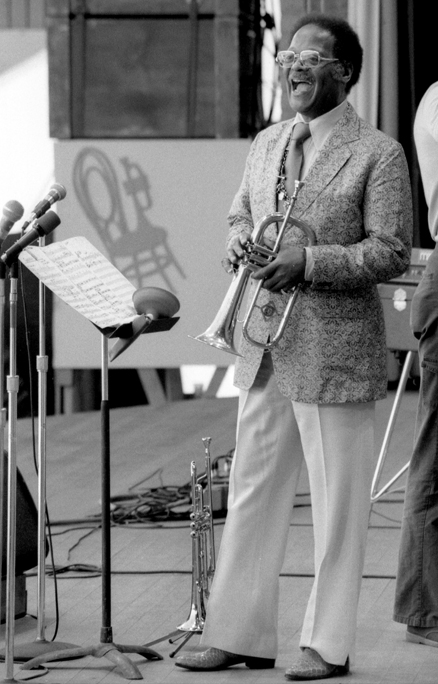|
Chico O'Farrill
Arturo "Chico" O'Farrill (October 28, 1921 – June 27, 2001) was a Cuban composer, arranger, and conductor, best known for his work in the Latin idiom, specifically Afro-Cuban jazz or "Cubop", although he also composed traditional jazz pieces and even symphonic works. Born to an Irish father and a German mother, he played the trumpet early in his career. He composed works for Machito (''Afro-Cuban suite'' with Charlie Parker, 1950) and Benny Goodman's Bebop Orchestra ("Undercurrent Blues"), and arranged for Dizzy Gillespie and Stan Kenton, among others. In the 1990s, O'Farrill led a big band that took up residence at New York's Birdland nightclub. Chico's son, pianist Arturo O'Farrill, eventually took over the band. Biography O'Farrill was born in Havana, Cuba. He was raised to follow family tradition and enter into law practice, [...More Info...] [...Related Items...] OR: [Wikipedia] [Google] [Baidu] |
Havana
Havana (; Spanish: ''La Habana'' ) is the capital and largest city of Cuba. The heart of the La Habana Province, Havana is the country's main port and commercial center.Cuba ''''. . The city has a population of 2.3million inhabitants, and it spans a total of – making it the largest city by area, the most populous city, and the [...More Info...] [...Related Items...] OR: [Wikipedia] [Google] [Baidu] |
Dizzy Gillespie
John Birks "Dizzy" Gillespie (; October 21, 1917 – January 6, 1993) was an American jazz trumpeter, bandleader, composer, educator and singer. He was a trumpet virtuoso and improviser, building on the virtuosic style of Roy Eldridge but adding layers of harmonic and rhythmic complexity previously unheard in jazz. His combination of musicianship, showmanship, and wit made him a leading popularizer of the new music called bebop. His beret and horn-rimmed spectacles, scat singing, bent horn, pouched cheeks, and light-hearted personality provided one of bebop's most prominent symbols. In the 1940s, Gillespie, with Charlie Parker, became a major figure in the development of bebop and modern jazz. He taught and influenced many other musicians, including trumpeters Miles Davis, Jon Faddis, Fats Navarro, Clifford Brown, Arturo Sandoval, Lee Morgan, Chuck Mangione, and balladeer Johnny Hartman. He pioneered Afro-Cuban jazz and won several Grammy Awards. Scott Yanow wrote, "Dizzy ... [...More Info...] [...Related Items...] OR: [Wikipedia] [Google] [Baidu] |
Blue Note Jazz Club
Blue Note Jazz Club is a jazz club and restaurant located at 131 West 3rd Street in Greenwich Village, New York City. The club was opened on September 30, 1981, by owner and founder Danny Bensusan, with the Nat Adderley Quintet being the featured performers for the night. The club's performance schedule features shows every evening at 8:00 pm and 10:30 pm and a Sunday jazz brunch with performances at 12:30 pm and 2:30 pm. The venue has also started a bi-weekly Late Night Groove Series giving New York's up-and-coming jazz, soul, hip-hop, R&B and funk artists an opportunity to showcase their talents on Saturday and Sunday mornings at 12:30 am. The club has locations in Tokyo and Nagoya, Japan; Milan, Italy; Waikiki, Hawaii; Napa, California; Beijing, China; and São Paulo, Brazil. History Bensusan's belief was "that if he brought big acts into a comfortable environment with great food, he could pack the house night after night."Alison Morris"Blue Note Jazz Club now a global bra ... [...More Info...] [...Related Items...] OR: [Wikipedia] [Google] [Baidu] |
Art Barbieri
Art is a diverse range of human activity, and resulting product, that involves creative or imaginative talent expressive of technical proficiency, beauty, emotional power, or conceptual ideas. There is no generally agreed definition of what constitutes art, and its interpretation has varied greatly throughout history and across cultures. In the Western tradition, the three classical branches of visual art are painting, sculpture, and architecture. Theatre, dance, and other performing arts, as well as literature, music, film and other media such as interactive media, are included in a broader definition of the arts. Until the 17th century, ''art'' referred to any skill or mastery and was not differentiated from crafts or sciences. In modern usage after the 17th century, where aesthetic considerations are paramount, the fine arts are separated and distinguished from acquired skills in general, such as the decorative or applied arts. The nature of art and related concepts, ... [...More Info...] [...Related Items...] OR: [Wikipedia] [Google] [Baidu] |
Clark Terry
Clark Virgil Terry Jr. (December 14, 1920 – February 21, 2015) was an American swing and bebop trumpeter, a pioneer of the flugelhorn in jazz, and a composer and educator. He played with Charlie Barnet (1947), Count Basie (1948–51), Duke Ellington (1951–59), Quincy Jones (1960), and Oscar Peterson (1964–96). He was with The Tonight Show Band on ''The Tonight Show'' from 1962 to 1972. His career in jazz spanned more than 70 years, during which he became one of the most recorded jazz musicians, appearing on over 900 recordings. Terry also mentored Quincy Jones, Miles Davis, Herbie Hancock, Wynton Marsalis, Pat Metheny, Dianne Reeves, and Terri Lyne Carrington.Terry, C. ''Clark: The Autobiography of Clark Terry'', University of California Press (2011). Early life Terry was born to Clark Virgil Terry Sr. and Mary Terry in St. Louis, Missouri, on December 14, 1920. Yanow, Scott Clark Terry biographyat Allmusic. He attended Vashon High School and began his professional care ... [...More Info...] [...Related Items...] OR: [Wikipedia] [Google] [Baidu] |
Spanish Rice (album)
''Spanish Rice'' is an album by American jazz trumpeter Clark Terry and Cuban composer-arranger Chico O'Farrill featuring performances recorded in 1966 for the Impulse! label.Impulse! Records discography accessed April 6, 2011Lord, T. Clark Terry discography accessed July 14, 2016 Reception The review by Ken Dryden awarded the album 3 stars stating "This is a fun recording that had the potential to be a memorable one, but it falls a bit short".Dryden, K[...More Info...] [...Related Items...] OR: [Wikipedia] [Google] [Baidu] |
Mexico City
Mexico City ( es, link=no, Ciudad de México, ; abbr.: CDMX; Nahuatl: ''Altepetl Mexico'') is the capital and largest city of Mexico, and the most populous city in North America. One of the world's alpha cities, it is located in the Valley of Mexico within the high Mexican central plateau, at an altitude of . The city has 16 boroughs or ''demarcaciones territoriales'', which are in turn divided into neighborhoods or ''colonias''. The 2020 population for the city proper was 9,209,944, with a land area of . According to the most recent definition agreed upon by the federal and state governments, the population of Greater Mexico City is 21,804,515, which makes it the sixth-largest metropolitan area in the world, the second-largest urban agglomeration in the Western Hemisphere (behind São Paulo, Brazil), and the largest Spanish language, Spanish-speaking city (city proper) in the world. Greater Mexico City has a gross domestic product, GDP of $411 billion in 2011, which makes ... [...More Info...] [...Related Items...] OR: [Wikipedia] [Google] [Baidu] |
Art Farmer
Arthur Stewart Farmer (August 21, 1928 – October 4, 1999) was an American jazz trumpeter and flugelhorn player. He also played flumpet, a trumpet–flugelhorn combination especially designed for him. He and his identical twin brother, double bassist Addison Farmer, started playing professionally while in high school. Art gained greater attention after the release of a recording of his composition "Farmer's Market" in 1952. He subsequently moved from Los Angeles to New York, where he performed and recorded with musicians such as Horace Silver, Sonny Rollins, and Gigi Gryce and became known principally as a bebop player. As Farmer's reputation grew, he expanded from bebop into more experimental forms through working with composers such as George Russell and Teddy Charles. He went on to join Gerry Mulligan's quartet and, with Benny Golson, to co-found the Jazztet. Continuing to develop his own sound, Farmer switched from trumpet to the warmer flugelhorn in the early 1960s, and ... [...More Info...] [...Related Items...] OR: [Wikipedia] [Google] [Baidu] |
Count Basie
William James "Count" Basie (; August 21, 1904 – April 26, 1984) was an American jazz pianist, organist, bandleader, and composer. In 1935, he formed the Count Basie Orchestra, and in 1936 took them to Chicago for a long engagement and their first recording. He led the group for almost 50 years, creating innovations like the use of two "split" tenor saxophones, emphasizing the rhythm section, riffing with a big band, using arrangers to broaden their sound, and others. Many musicians came to prominence under his direction, including the tenor saxophonists Lester Young and Herschel Evans, the guitarist Freddie Green, trumpeters Buck Clayton and Harry "Sweets" Edison, plunger trombonist Al Grey, and singers Jimmy Rushing, Helen Humes, Thelma Carpenter, and Joe Williams. Biography Early life and education William Basie was born to Lillian and Harvey Lee Basie in Red Bank, New Jersey. His father worked as a coachman and caretaker for a wealthy judge. After automobiles replaced ... [...More Info...] [...Related Items...] OR: [Wikipedia] [Google] [Baidu] |
Juilliard School
The Juilliard School ( ) is a private performing arts conservatory in New York City. Established in 1905, the school trains about 850 undergraduate and graduate students in dance, drama, and music. It is widely regarded as one of the most elite drama, music, and dance schools in the world. History Early years: 1905-1946 In 1905, the Institute of Musical Art, Juilliard's predecessor institution, was founded by Frank Damrosch, the godson of Franz Liszt and head of music education for New York City's public schools, on the premise that the United States did not have a premier music school and too many students were going to Europe to study music. In 1919, a wealthy textile merchant named Augustus Juilliard died and left the school in his will the largest single bequest for the advancement of music at that time. In 1968, the school's name was changed from the Juilliard School of Music to The Juilliard School to reflect its broadened mission to educate musicians, directors, ... [...More Info...] [...Related Items...] OR: [Wikipedia] [Google] [Baidu] |
Bernard Wagenaar
Bernard Wagenaar (July 18, 1894 – May 19, 1971) was a Dutch-American composer, conductor and violinist. Wagenaar was born in Arnhem. He studied at Utrecht University before starting his career as a teacher and conductor in 1914. He moved to the U.S. in 1920, and he became a citizen in 1927. From 1925 to 1968 he taught at the Juilliard School, where Ned Rorem, Jacob Druckman, Bernard Herrmann, Robert Ward, Tutti Camarata, Charles Jones, Alan Shulman, Katharine Mulky Warne, and James Cohn were among his pupils. He was an active member of the League of Composers and similar organizations and was an officer of the Order of Orange-Nassau in the Netherlands. He died in York, Maine. He wrote four symphonies (1926, 1930, 1936 and 1946) and other orchestral, vocal, and chamber music in a broadly neoclassical style. His second symphony was one of the few American works Arturo Toscanini performed with the New York Philharmonic Orchestra; the first performances were on November 10, ... [...More Info...] [...Related Items...] OR: [Wikipedia] [Google] [Baidu] |
Stefan Wolpe
Stefan Wolpe (25 August 1902, Berlin – 4 April 1972, New York City) was a German-Jewish-American composer. He was associated with interdisciplinary modernism, with affiliations ranging from the Bauhaus, Berlin agitprop theater and the kibbutz movement to the Eighth Street Artists' Club, Black Mountain College, and the Darmstadt Summer Courses for New Music. He lived and worked in Berlin (1902–1933) until the Nazi seizure of power forced him to move first to Vienna (1933–34) and Jerusalem (1934–38) before settling in New York City (1938–72). In works such as ''Battle Piece'' (1942/1947) and "In a State of Flight" in ''Enactments for Three Pianos'' (1953), he responded self-consciously to the circumstances of his uprooted life, a theme he also explored extensively in voluminous diaries, correspondence, and lectures. His densely eclectic music absorbed ideas and idioms from diverse artistic milieus, including post-tonality, bebop, and Arab classical musics. Life Wolpe was b ... [...More Info...] [...Related Items...] OR: [Wikipedia] [Google] [Baidu] |







